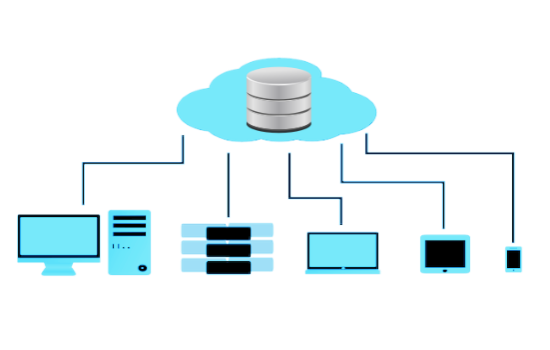Web database design is the process of designing a database that is used to store information on the internet. A web database can be accessible through a web browser or via an Application Programming Interface (API). The design of a web database is critical because it determines how efficiently data can be stored, retrieved, and analyzed.
Web database design is a crucial aspect of developing a successful website or web application.
Databases are at the heart of virtually every business software system. These systems typically consist of ‘source of truth’ transactional databases, which hold the core data your business needs to function correctly, and operational data sources that contain transitory items to feed data warehouses for reporting and data analysis.
Core business data examples are customer profiles, transactions and account balances. These need to be correct, consistent and available.
A well-designed database ensures that data is organized, easily accessible, and secure.
In this article, we’ll cover some key principles and best practices for designing effective web databases.
What is a web database?
A web database (cloud database or online database) is a collection of data that is organized in a way that allows for efficient storage and retrieval. It is accessed through a web application, which can be used to query the data and present the results in a variety of ways. The same web application or another application interface can be used to add, edit, and delete data from the database.
Unlike traditional databases that are installed on a local machine, a web database is hosted on a remote server and can be accessed by multiple users from any location with an Internet connection.
Web databases are typically used for websites or web applications that require dynamic data. Examples include e-commerce websites, online banking systems, content management systems, online forums, social networking platforms, and other web-based applications that require the storage, management and retrieval of data.
In addition to accessibility from anywhere with an internet connection, web databases offer a number of advantages over traditional databases, including easy scalability, and simplified maintenance and backup.
Examples of web database management systems include MySQL, PostgreSQL, Microsoft SQL Server, Oracle, and MongoDB.
Web databases should be designed to be highly scalable, secure, and reliable.
Web databases can be accessed by authorized users through a login process, and they can be secured using various methods such as encryption and user access controls. They are typically hosted on a web server and can be accessed using a specific URL or through a web application interface.
Types of web databases
There are several types of web databases, including:
-
Relational databases: This is the most common type of web database. Data is organized into tables with rows and columns, and relationships between tables are defined through keys. Examples of relational databases include MySQL, Oracle, and Microsoft SQL Server.
-
Non-Relational Databases: Non-relational database management systems are commonly referred to as NoSQL databases. This type of database does not use relational tables, but rather stores data in documents or collections. and provides a mechanism for storage and retrieval of data that is modeled by means other than the tabular relations used in relational databases. Examples of NoSQL databases include Couchbase, MongoDB and Redis.
Motivations for the non-relational approach include simplicity of design, simpler “horizontal” scaling to clusters of machines (which is a problem for relational databases), finer control over availability and limiting the object-relational impedance mismatch. The data structures used by NoSQL databases (e.g. document, key–value pair, graph or wide column) are different from those used by default in relational databases, making some operations faster in NoSQL.
The particular suitability of a given NoSQL database depends on the problem it must solve. Sometimes the data structures used by NoSQL databases are viewed as “more flexible” than relational database tables. Many NoSQL stores compromise consistency in favor of availability, partition tolerance, and speed.
-
Key-value database: A Key–value database is the simplest type of NoSQL database. It is a type of non-relational database that uses a simple key-value method to store data. A collection of key-value pairs in which a key serves as a unique identifier. Both keys and values can be anything, ranging from simple objects to complex compound objects. Key-value databases are highly partitionable and allow horizontal scaling at scales that other types of databases cannot achieve.
In its simplest form a Key-value database is a data storage paradigm designed for storing, retrieving, and managing associative arrays, and a data structure more commonly known today as a dictionary or hash table. A recent example of a key-value database is RocksDB.
-
Object-oriented databases: This type of database stores data in objects rather than tables. Each object has properties and methods that define its behavior. Examples of object-oriented databases include ObjectDatabase++, ObjectStore and Realm.
-
Document databases: A document database stores data in JSON, BSON, or XML documents. Documents in the database can be nested. Particular elements can be indexed for faster querying.
With a document database you can access, store, and retrieve documents from your network in a form that is much closer to the data objects used in applications, which means less translation is required to use and access the data in an application. Examples of document databases include Apache CouchDB, Azure Cosmos DB, BaseX, Couchbase Server, CrateDB, MarkLogic, MongoDB, OrientDB and eXist DB.
Designing a web database
The following are some important factors to consider when designing a web database:
-
Data Requirements: The first step in designing a web database is to identify the data that needs to be stored. How will the data be used? Who will use the data and for what purposes? You should consider how the data needs to be organized, and how it will be accessed. It is important to consider both the current data requirements and potential future requirements.
-
Data Modeling: Data modeling is the process of defining the data objects and their relationships to each other. This step is important because it helps to ensure that the data is organized in a way that supports efficient storage and retrieval.
A data model is a visual representation of the data that will be stored in the database. It includes tables, fields, and relationships between tables. When designing your data model, it’s important to consider how the data will be used and accessed. Make sure to include all the necessary data fields and relationships in your model.
-
Normalization: Normalization is the process of organizing the data in a database to reduce redundancy and improve data integrity. Normalization involves breaking down larger tables into smaller ones and establishing relationships between them. This is important because it can help ensure that data is accurate and consistent across the database. There are several levels of normalization, but the most common is third normal form (3NF). In 3NF, each table contains only data that is related to the primary key of the table.
-
Data validation: How will the data be validated before it is stored in the database? Data validation ensures data has been cleaned and that it is correct, complete and useful. Data validation is intended to provide certain well-defined guarantees for fitness and consistency of data in an application. Data validation can be part of the data conversion process.
-
Security: Security is a critical aspect of web database design. This might include using strong passwords, encrypting data, and limiting access to the database to only authorized users.
Types of database security include:
- Access control
- Application security
- Auditing
- Authentication
- Backups
- Encryption
- Integrity controls
-
Performance: The performance of a web database is critical to ensure that users can access data quickly and efficiently. Your database should be designed in a way that optimizes performance, such as by using indexes and avoiding complex queries.
-
Scalability: When designing your web database, it’s important to plan for scalability. This means designing a database that can handle increasing amounts of data and users over time. This might include designing a distributed database or using clustering or sharding to distribute data across multiple servers. To improve scalability in an existing system, query optimization is a useful first step, as is adding more memory to enable the database engine to cache indexes and table data.
Best practices for web database design
By following best practices for web database design, developers can create databases that are efficient and scalable.
Here are some best practices for web database design:
-
Choose the right database type for a particular task.
-
Use a consistent naming convention for tables and fields.
-
Avoid using spaces or special characters in table and field names.
-
Use primary keys to uniquely identify each record in a table.
-
Use foreign keys to define relationships between tables.
-
Use indexes to improve query performance.
-
Use data types that are appropriate for the data being stored.
-
Avoid storing large objects, such as images or videos, in the database. Instead, store a reference to the object and store the object itself on a file server.
-
For data that is frequently read and changes rarely, your processing logic can be modified to first check a distributed cache.
-
Test and refine your design. Once you have designed your web database, it’s important to test it thoroughly and refine it as needed. This might include running performance tests to identify bottlenecks or errors in the database design. You should also solicit feedback from users and stakeholders to identify areas for improvement.
Conclusion
Web database design is a critical aspect of building a web application. Properly designed databases ensure that data can be efficiently stored, retrieved, and analyzed. By considering the above factors, you can design a web database that meets the needs of your users and organization while also ensuring security, performance, and scalability.
Nexus Software Systems has more than 38 years experience designing high-performance, robust and scalable databases and the software to interface with them.
Contact us today to get a quality database design for your website or web application.



